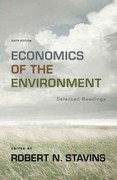Question
Ques: 1 D. In the short run, at least one of the firm's inputs is fixed, while in the long run, a firm is able
Ques: 1
D. In the short run, at least one of the firm's inputs is fixed, while in the long run, a firm is able to vary all its inputs and adopt new technology. Is the amount of time that separated the short run from the long run the same for every firm? No
Ques: 2
A. A relationship between the amounts of outputs of different products the firm can produce with fixed amounts of inputs. What does the short-run production function hold constant? D. The amount of all inputs
Ques: 3
1) Fixed (2) Variable (3) Variable (4) Fixed (5) Fixed
Ques: 4
Workers | Cars | Fixed Cost | Variable cost | Total Cost | Average Total cost |
0 | 0 | $5,000 | $0 | $5,000 | - |
1 | 20 | $5,000 | $4,000 | $9,000 | $450 |
2 | 30 | $5,000 | $8,000 | $13,000 | $433.33 |
3 | 40 | $5,000 | $12,000 | $17,000 | $425 |
4 | 50 | $5,000 | $16,000 | $21,000 | $420 |
5 | 55 | $5,000 | $20,000 | $25,000 | $454.54 |
Ques: 5 The firm's fixed cost of production is $21,000, and its variable cost of production is $460,000.
Ques: 6 E. at least one of the firm's inputs is fixed, while in the long run, the firm is able to vary all its inputs, adopt new technology, and change the size of its physical plant.
Ques: 7 C. adding more of a variable input to the same amount of fixed input will eventually cause the marginal product of the variable input to decline. Does it apply in the long run? No
Ques: 8
Workers | Total Product | Marginal Product | Average Product |
0 | 0 | - | - |
1 | 100 | 100 | 100 |
2 | 210 | 110 | 105 |
3 | 340 | 130 | 113.33 |
4 | 460 | 120 | 115 |
5 | 560 | 100 | 112 |
6 | 650 | 90 | 108.33 |
7 | 730 | 80 | 104.28 |
Ques: 9
Labor | Capital | Output | Marginal Product |
0 | 1 | 0 | - |
1 | 1 | 160 | 160 |
2 | 1 | 480 | 320 |
3 | 1 | 640 | 160 |
4 | 1 | 720 | 80 |
5 | 1 | 760 | 40 |
E. are experienced when the third worker is hired.
Ques: 10
The marginal product of the first worker is 2 yards per day. The marginal product of the second worker is 3 yards per day. The marginal product of the third worker is 4 yards per day. (1) returns to scale
Ques: 11
Variable cost = $40,000 Average variable cost = $8 Average fixed cost = $2 (1) decreases
Ques: 12 Marginal cost = $27 Total cost = $69 x 30 = $2,070 Variable cost = $50 x 30 = $1,500 Fixed cost = Total cost - Variable cost = $570
Explanation:
1. The fixed factors remain constant in the short run due to the limitation of time and resources.
2. PPF shows the quantity of two goods that can be produced with a fixed amount of resources.
3. Factors which change with the level of production are variable while the factors which remain the same irrespective of the production are called fixed costs.
4. Total Cost = Fixed Cost + Variable cost
Average total cost = Total Cost / Output
5. Fixed cost = $18,000 + $3,000 = $21,000
Variable cost = 2,000 (60 + 70 + 100) = 2,000 x $230 = $460,000
6. In the short-run factors are either fixed or variable depending on their use while in a long run all the factors can be changed, therefore all factors are variable.
7. Adding more variable factors with constant units of fixed factor decreases the efficiency of fixed factors and productivity of variable factors resulting in diminishing returns.
8. Marginal Product = TPn - TPn-1
Average product = Total Product / Units of the variable factor
9. Marginal Product = TPn - TPn-1
The marginal product starts diminishing from the third worker.
10. Marginal Product = TPn - TPn-1
11. Variable cost = Total Cost - Fixed cost
Average variable cost = Variable cost / Output
Average fixed cost = Fixed cost / Output
12. Total Cost = ATC x Quantity
Variable cost = AVC x Quantity
Fixed cost = Total cost - Variable cost
This is what i got for the 12 questions above:
2 i got D and B or is it A and D
5 i got 21,000 for fixed and 4460,000 for variable or is it 21,000 for fixed or 460,000 or variable
-===========================






Step by Step Solution
There are 3 Steps involved in it
Step: 1

Get Instant Access to Expert-Tailored Solutions
See step-by-step solutions with expert insights and AI powered tools for academic success
Step: 2

Step: 3

Ace Your Homework with AI
Get the answers you need in no time with our AI-driven, step-by-step assistance
Get Started


